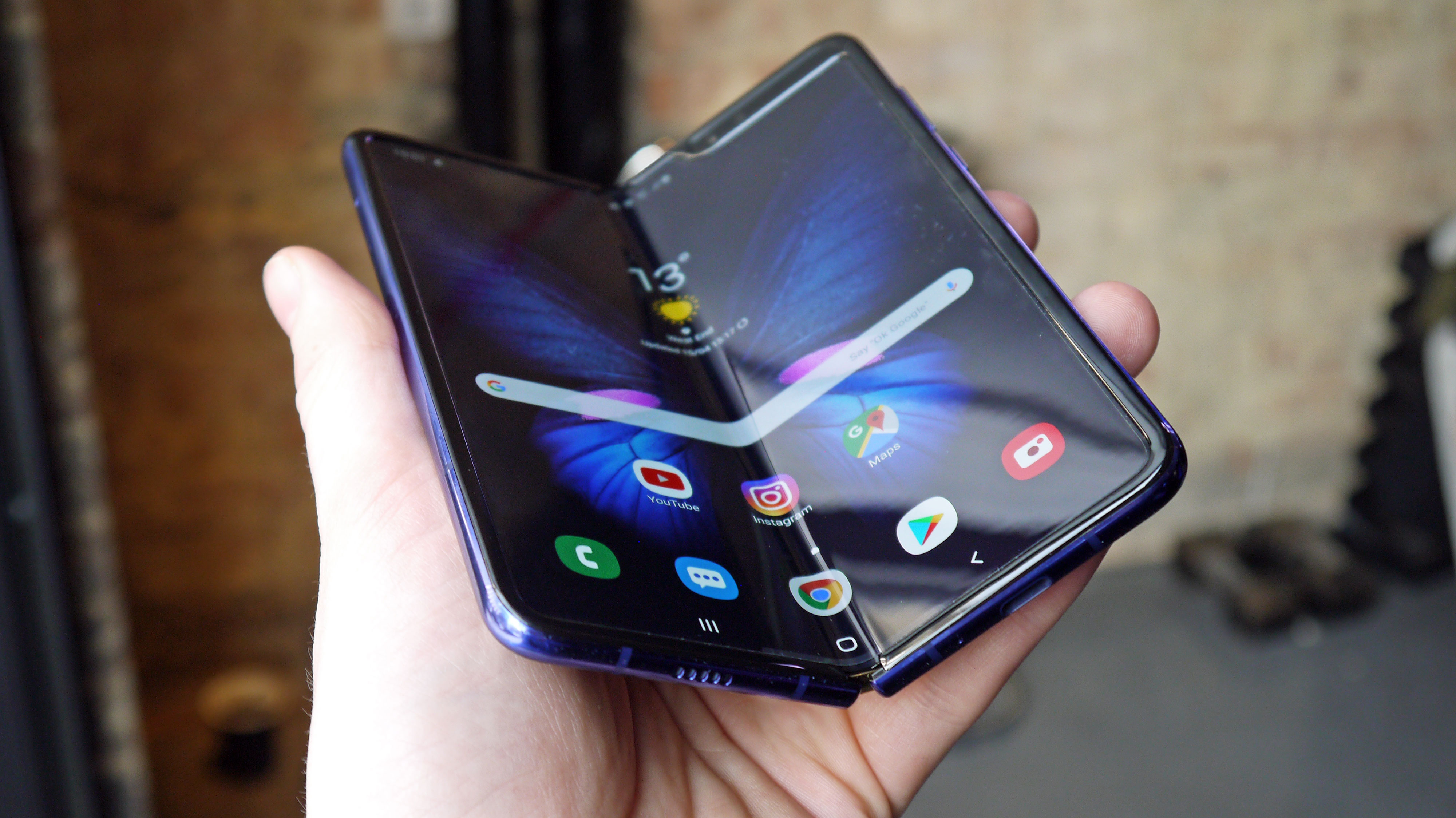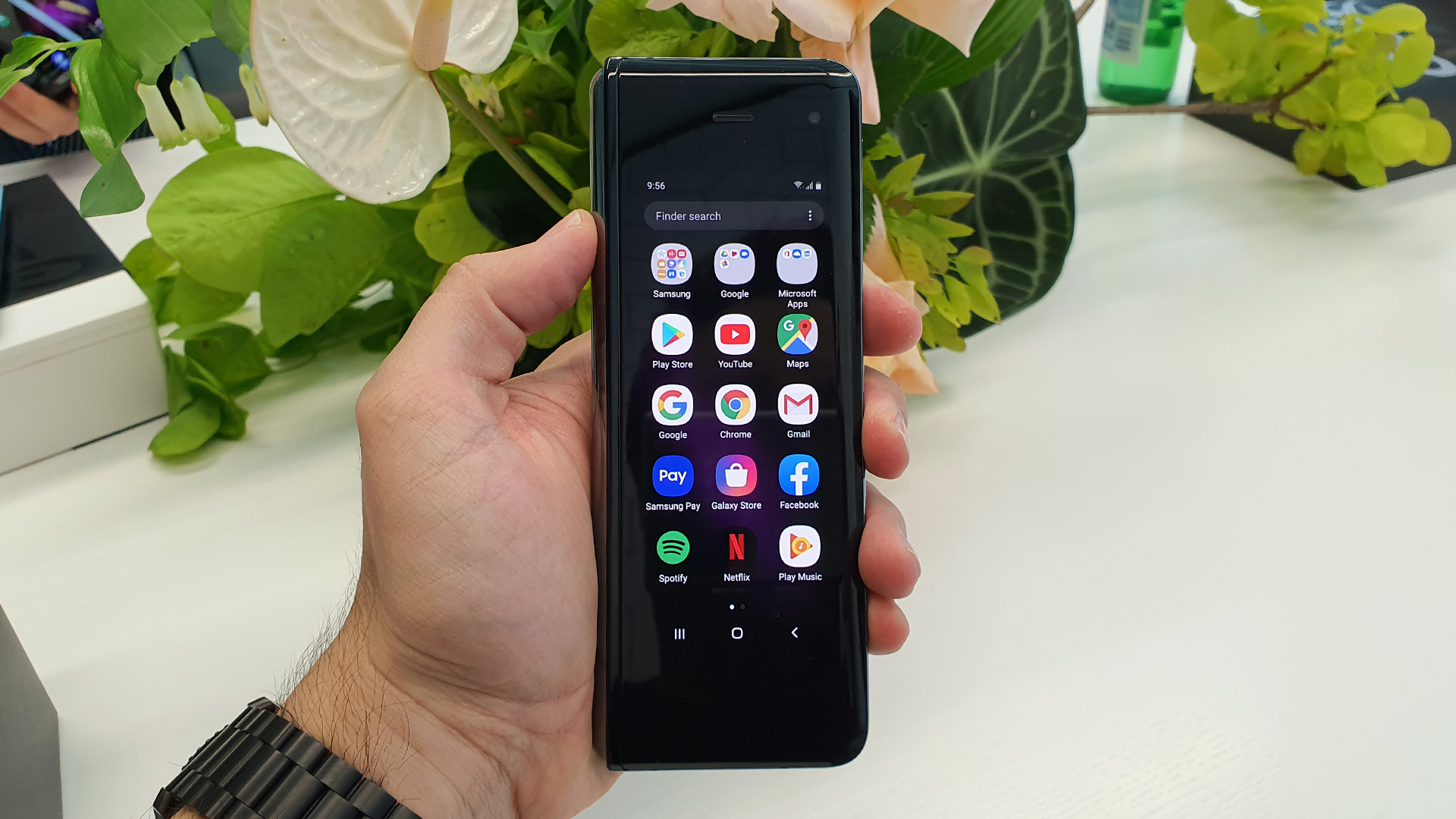Netflix's new comedy has the weirdest phone product placement I've ever seen
Samsung Galaxy Z Fold on the big screen...

Since I test smartphones for a living, I have an unnatural ability to spot smartphones in movies and TV shows. Google Pixel 3 in Avengers? Check. A Nokia phone in James Bond? Check. Some old Samsung phone in Army of Thieves? Check.
But I've just seen the new Judd Apatow Netflix original, The Bubble, and it had such an obvious - and weird - Samsung Galaxy Fold 2 pop up in multiple scenes, that I couldn't quite get my head around it.
This is a 2020 foldable phone, and Samsung's first such device, and it makes sense that the newest Galaxy Z Fold 3 wasn't used due to that being fairly recent and movies taking a while to make.
But the way the phone was shown in the movie is... confusing.
What happened?
Sadly, Netflix doesn't allow screenshots, so I can't exactly show you the Samsung Galaxy Fold 2 placement in action. Luckily, if you've got Netflix, you'll be able to find it, due to the movie being an original, and therefore accessible anywhere.
Head over to 45:12 in the film, and you'll find Leslie Mann and David Duchovny snuggling in bed and video calling their adopted son. They're clearly using the Fold - if you know phones, you can tell by its size and hinge.
The layout of the call app doesn't look like any I've ever seen, but I'm not ruling out its existence - there are loads of niche apps out there (or ones the movie's producers wouldn't need to pay to use).
Sign up for breaking news, reviews, opinion, top tech deals, and more.
However, the footage shown on the screen looks weirdly stretched - either the son was recently run over and turned into a squished version of themselves, like in a cartoon (pretty unlikely), or whoever used VFX to add the son onto the phone screen (because this obviously isn't a live video call) did a weird job.
Of course, this likely isn't Leslie Mann's hand at all - when we're looking at the phone, we can see loads of bed sheets behind it. But when we see the couple, we see that this view just isn't logically possible - Mann is holding it off the edge of the bed.
Not only that, but there's a continuity issue, too: the hands move about the phone in different shots, sometimes holding it by the two bottom corners, but sometimes having one hand on the top.
It's almost like the shots of the phone were glamor shots, specifically framed and lit to make it look nice.
Now let's skip ahead to 1:06:32 (or just watch for another 15 minutes - despite the bad reviews, and my better judgment, I enjoyed the movie). Another interaction between the on-screen 'lovers', but this time more confrontational.
Again, Mann is using the phone, but it's closed this time - you can tell by its size, but also some shots clearly show the fold and hinge. You can even see the gap between the two sides - the original Fold didn't close completely.

If you thought the video call footage looked daft before, you're going to have a field day with it this time - the son looks like he's half-way through being pulled through a black hole. There's no UI, or icons on the video call. It looks daft - but at least it fits within the logistics of the film... well, other than Mann's hands once again dancing around the Fold's frail little body in every shot.
The thing is, foldable phones aren't commonplace enough for people to easily recognize them just yet. Most watchers aren't going to realize this is the same phone used in both scenes, despite it looking pretty different - I'd imagine most people would be able to look past this concern if it wasn't for how much the distractingly-bad video call footage looks.
The phone isn't shown to open or close at all, so people won't know it's a foldable. They'll just think 'is that the same phone as before, or a continuity goof?' and probably opt for the latter.
Was it definitely a product placement?
I can't prove outright that this is product placement. The movie runs the gamut of tech brands with iPhones and MacBooks shown throughout, as well as some weird future technology where any flat surface can turn into a video call screen (has the universe of The Bubble done away with cameras?).
It's possible that this is Leslie Mann's normal smartphone, however I'm not convinced. In that second scene I point out, she seems a little hesitant to pull it out of her pocket, which suggests that handling a hefty foldable phone doesn't come naturally to her.
And it seems unlikely that this phone is a prop bought for her to use - the production team isn't going to sign off on a $1,000+ smartphone when they could just use a $300 one. Oh, and a phone that literally changes form is going to cause an aneurysm for the continuity supervisor.

It seems likely to me, then, that this is a product placement organized by Samsung (though this phone choice would be even weirder if it wasn't).
Foldable phones aren't bought by normal people, though, not with their high price tag and weird easy-to-break form. Sure, the character who owns the Fold isn't exactly normal themselves, but the fact they own an old Mac suggests they're not exactly techy, either.
Most of the other tech shown throughout the film is from Apple, but I don't imagine that the fruit company would sponsor the film, not with its weird rules about only heroes owning iPhones (and the second scene I reference above shows a MacBook being set on fire).
And the presentation and framing of the Galaxy Fold, when it is shown, make it seem like the subject of glamor shots, taken to make the phone look good. So, even if it's not a paid placement, it's certainly still one that's highlighted in the movie.
Making me feel F-old
This is the weirdest smartphone product placement I've seen in a long while. That's partly because of its presentation, but also because tech, unlike food or clothing, usually doesn't get shown front-and-center in pictures like this. So, seeing a weirdly-stretched-out kid on the screen, complete with a punch-hole missing on his face, was just bizarre.
The Samsung Galaxy Fold 2 scenes aren't the worst product placements in the film by any means. There are multiple protracted TikTok dances that are so cringe-inducing, that I felt my soul leave my body (though I'm convinced at least one is meant to make you feel that way).

Now and then when watching a film, you see something that takes you back - someone using Alta Vista, or AOL, or even Bing. You're taken out by the weird and specific nature of a product being mentioned, one that may have been around at the time of the story, but doesn't exist now (I had to Google Alta Vista - it was made in the same year I was).
When people watch The Bubble in 20 years, people are going to be confused. "Remember TikTok?", they'll ask, "is that a physical smartphone?".
Judd Apatow does an amazing job transforming Covid from a series of events to a concept in The Bubble - the movie isn't just a series of references to real-life events that happened over 2020 and 2021 (streaming services are rife with these, and I find them so lazy).
Instead, the 'villain' plaguing the characters are their own egos, with Covid just acting as the inciting incident that pushes these people over the edge - as a result, the disease is downplayed and works more as a context or setting, rather than an antagonist. To be clear, as someone who's found the whole 'pandemic' narrative in stories trite and repeated ad nauseam with no valuable commentary added, The Bubble was a startling breath of fresh air.
That is to say, I don't think the references to Covid in the movie will age poorly - people will still know the pandemic existed. It'll be an easy Wikipedia trip away for younger people, or they can ask their beleaguered parents.
With that in mind, though, it's baffling that the product placements in the film will age worse than the timely story itself. I hope the production got lots of money (or any) from Samsung and TikTok - otherwise their presence in scenes detracts from an otherwise 5/10 movie.

Tom Bedford joined TechRadar in early 2019 as a staff writer, and left the team as deputy phones editor in late 2022 to work for entertainment site (and TR sister-site) What To Watch. He continues to contribute on a freelance basis for several sections including phones, audio and fitness.
